
Roger Gerl's red '93 VR-4 next to Jim Matthews' black '94 Stealth R/T
TT
Our car is a jet black 1994 Dodge Stealth R/T twin turbo AWD AWS. The twin-turbocharged and intercooled 3.0 liter six cylinder engine produces over 367 SAE horsepower and 354 lb-ft of torque, which is transferred to all four 245/45ZR17 Michelin Pilot XGT Z4 tires via a six-speed Getrag transmission. Handling is excellent with computer-controlled active suspension, cockpit-adjustable shock dampening, four-wheel steering, and four massive antilock disc brakes. The ride is very comfortable, with soft leather interior, fully-automated climate control, and 210 watt Infinity sound system. The 1994 model of the Stealth is the best, as this was the first year of the revised model (updated styling, better transmission, more power, etc.) and preceded the years Chrysler deleted some options (such as active suspension and cockpit-adjustable exhaust) while phasing the car out of the Dodge lineup. Also, while I very much like the styling of the otherwise identical Mitsubishi 3000GT VR-4, I prefer the more understated styling of the Dodge Stealth.

Roger Gerl's red '93 VR-4 next to Jim Matthews' black '94 Stealth R/T
TT

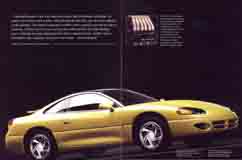
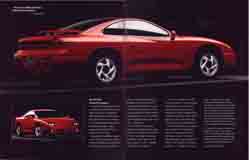
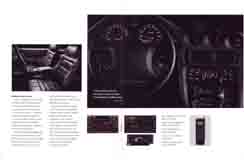
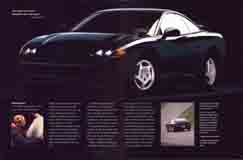
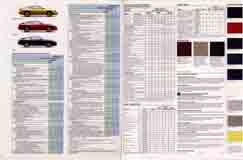
The turbo boost pressure limit on these cars is very conservative as set by the factory. It is easy to add a bleeder valve to keep the wastegates closed longer, therefore raising boost, and several manufacturers offer electronic boost controllers that actively monitor and control boost levels (eliminating the danger of boost spikes). Stock, the car can accelerate to 60 mph in 4.8 seconds and complete the 1/4 mile in 13.7 seconds (Motor Trend). With a simple $2 bleeder from WalMart's aquarium department, folks have lowered these times to the low 4 second and 12 second ranges, respectively. These are very impressive times, especially for a 3800 lb luxury sports coupe that hasn't been stripped down to plastic and fiberglass like hard core sports cars. And with all-wheel-drive, these numbers don't suffer in less than ideal conditions (like wet roads)! Take a look at some of the times achieved by others with these cars ( Team 3S List, 3S Quick List), and if you want to visit the track and see what you can do, read this first. I'm not as experienced so my times are not nearly as impressive. According to my G-Tech accelerometer, when the car was stock I could get to 60 mph in 5.7 seconds, and after the air intake and boost controller were added, this dropped to 4.79 seconds (18.75% faster with 14.69% more horsepower). Applying this percentage difference to the times achieved by the professional driver at Motor Trend, reaching 60 mph in the low four-second range is a fair estimate. The highest speed I have seen on the Autobahn was in 1999 when I hit 171 mph in pursuit of a 2000 Porsche 911 Type 996 Twin-Turbo prototype mule (matt black with a Boxter front and an Audi TT rear!) on Autobahn 5 south (I got a thumbs-up from the factory test driver as he took the exit for Stuttgart!).